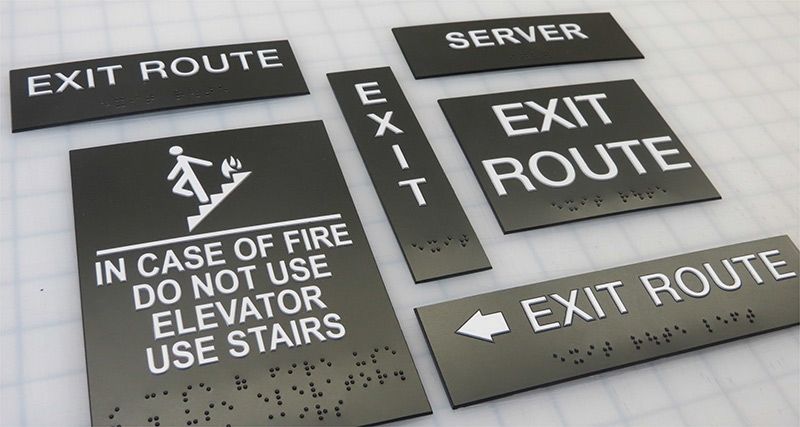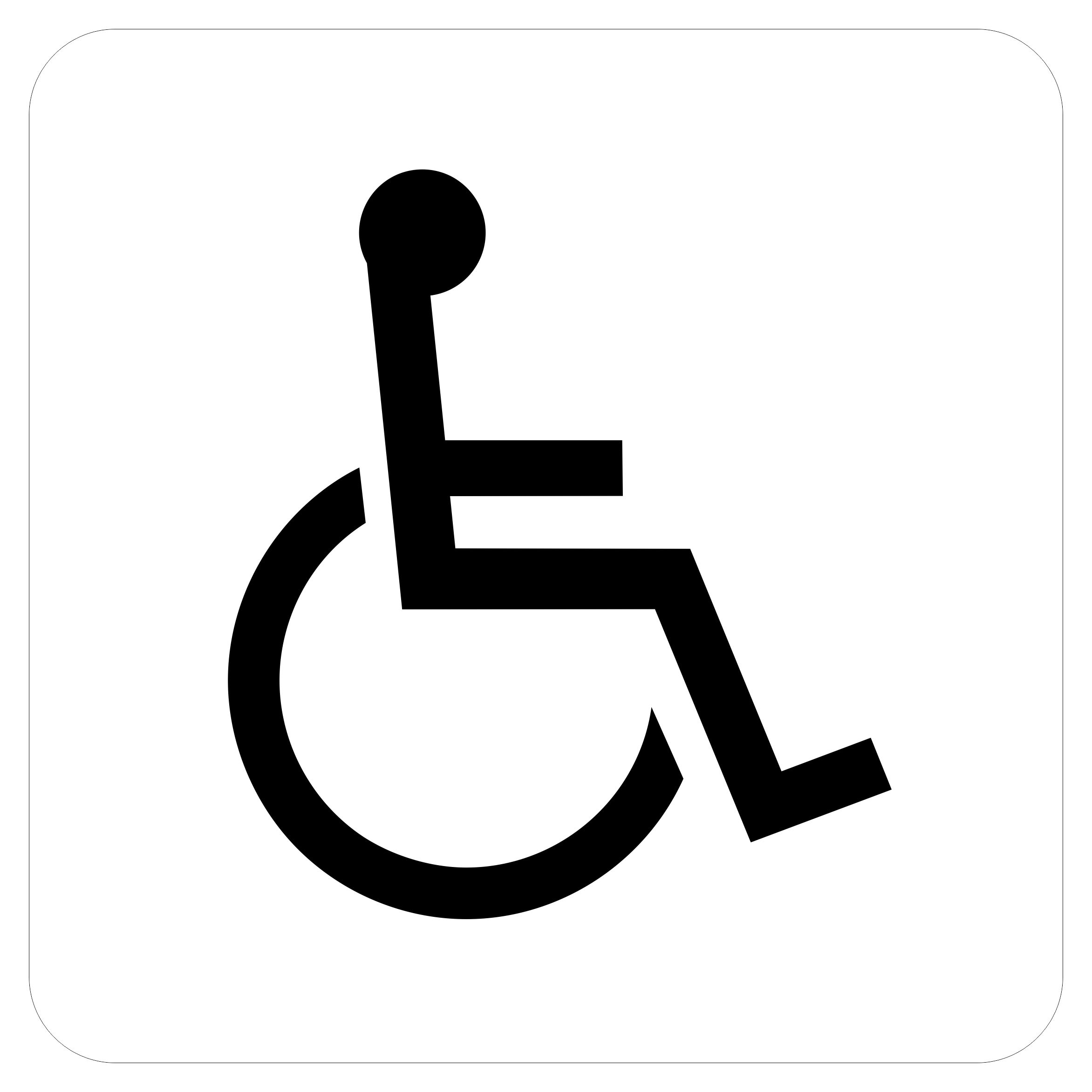A Comprehensive Guide to Picking the Right ADA Signs
A Comprehensive Guide to Picking the Right ADA Signs
Blog Article
Exploring the Secret Features of ADA Indicators for Boosted Availability
In the realm of access, ADA signs offer as quiet yet effective allies, making sure that spaces are navigable and comprehensive for people with disabilities. By integrating Braille and tactile elements, these indicators damage obstacles for the aesthetically impaired, while high-contrast color schemes and legible typefaces provide to diverse visual needs.
Value of ADA Conformity
Ensuring compliance with the Americans with Disabilities Act (ADA) is important for fostering inclusivity and equivalent gain access to in public rooms and offices. The ADA, established in 1990, mandates that all public facilities, employers, and transport solutions accommodate people with handicaps, ensuring they enjoy the same legal rights and opportunities as others. Compliance with ADA standards not only satisfies legal commitments yet additionally improves a company's reputation by showing its commitment to variety and inclusivity.
One of the crucial facets of ADA compliance is the execution of accessible signage. ADA signs are created to guarantee that individuals with handicaps can quickly navigate through structures and areas. These indicators should follow details guidelines regarding size, font, shade contrast, and positioning to assure visibility and readability for all. Correctly carried out ADA signs aids get rid of obstacles that individuals with specials needs usually experience, therefore advertising their independence and confidence (ADA Signs).
In addition, adhering to ADA laws can reduce the danger of possible penalties and lawful effects. Organizations that fail to adhere to ADA standards may encounter legal actions or penalties, which can be both destructive and economically difficult to their public picture. Therefore, ADA compliance is indispensable to promoting a fair setting for everyone.
Braille and Tactile Aspects
The unification of Braille and responsive elements right into ADA signs symbolizes the concepts of ease of access and inclusivity. These functions are crucial for individuals who are aesthetically impaired or blind, enabling them to browse public spaces with better self-reliance and self-confidence. Braille, a responsive writing system, is vital in providing created information in a format that can be easily regarded with touch. It is normally positioned underneath the corresponding message on signs to guarantee that individuals can access the details without visual aid.
Responsive elements extend beyond Braille and include raised characters and icons. These parts are made to be discernible by touch, enabling individuals to determine area numbers, washrooms, departures, and other essential locations. The ADA establishes particular guidelines pertaining to the size, spacing, and placement of these responsive elements to maximize readability and make sure uniformity across various settings.

High-Contrast Color Pattern
High-contrast color pattern play a pivotal role in enhancing the exposure and readability of ADA signs for individuals with aesthetic impairments. These systems are vital as they make the most of the difference in light reflectance between text and background, making sure that signs are quickly discernible, even from a range. The Americans with Disabilities Act (ADA) mandates the usage blog here of particular color contrasts to accommodate those with restricted vision, making it an essential element of conformity.
The efficacy of high-contrast shades hinges on their ability to stand out in numerous illumination problems, consisting of dimly lit atmospheres and locations with glow. Typically, dark message on a light history or light message on a dark history is utilized to attain ideal comparison. Black message on a white or yellow background offers a plain aesthetic difference that aids in fast acknowledgment and understanding.

Legible Fonts and Text Dimension
When thinking about the design of ADA signs, the selection of clear fonts and suitable text dimension can not be overemphasized. The Americans with Disabilities Act (ADA) mandates that typefaces must be not italic and sans-serif, oblique, manuscript, highly ornamental, or of uncommon type.
According to ADA guidelines, the minimum text height should be 5/8 inch, and it ought to boost proportionally with watching range. Consistency in text dimension contributes to a natural visual experience, assisting people in navigating atmospheres effectively.
Furthermore, spacing between lines and letters is integral to Discover More clarity. Adequate spacing prevents personalities from appearing crowded, improving readability. By sticking to these standards, designers can considerably ADA Signs boost availability, guaranteeing that signage offers its desired objective for all people, no matter their visual abilities.
Reliable Placement Approaches
Strategic placement of ADA signs is crucial for optimizing availability and making certain conformity with lawful standards. ADA standards stipulate that indicators should be placed at an elevation in between 48 to 60 inches from the ground to ensure they are within the line of view for both standing and seated people.
Additionally, indicators need to be positioned adjacent to the lock side of doors to enable very easy identification before entry. This positioning assists people locate spaces and rooms without obstruction. In cases where there is no door, indicators should be located on the nearby adjacent wall. Consistency in sign placement throughout a center improves predictability, minimizing complication and boosting overall individual experience.

Conclusion
ADA indicators play a crucial duty in advertising accessibility by incorporating attributes that address the requirements of people with disabilities. These components collectively promote a comprehensive setting, highlighting the relevance of ADA compliance in making sure equal accessibility for all.
In the realm of ease of access, ADA signs serve as silent yet effective allies, making sure that rooms are navigable and inclusive for people with specials needs. The ADA, enacted in 1990, mandates that all public centers, companies, and transport solutions accommodate individuals with handicaps, guaranteeing they appreciate the very same legal rights and chances as others. ADA Signs. ADA indications are developed to ensure that individuals with specials needs can quickly browse via rooms and structures. ADA guidelines specify that indications should be installed at a height in between 48 to 60 inches from the ground to ensure they are within the line of view for both standing and seated individuals.ADA signs play a vital duty in promoting availability by integrating functions that attend to the requirements of individuals with handicaps
Report this page